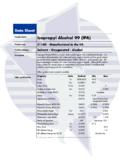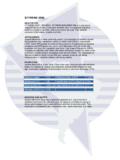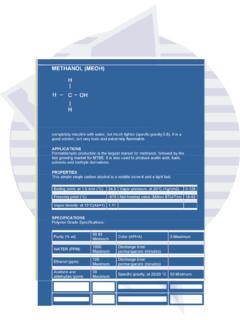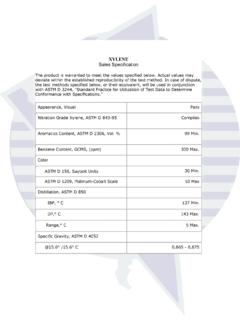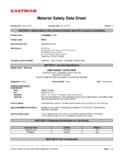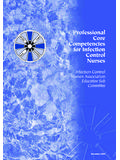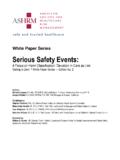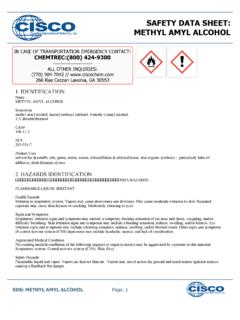Transcription of XYLENE MATERIAL SAFETY DATA SHEET SECTION 1: …
1 XYLENE MATERIAL SAFETY DATA SHEET _____ SECTION 1: PRODUCT AND COMPANY IDENTIFICATION _____ PRODUCT NAME PRODUCT CODE XYLENE 132020 PRODUCT CATEGORY Petroleum Solvent _____ SECTION 2: COMPOSITION/INFORMATION ON INGREDIENTS _____ CAS NO. OF APPROXIMATE COMPONENTS COMPONENTS CONCENTRATION XYLENE (Mixed) 1330-20-7 Approximately 85 mass % Ethylbenzene 100-41-4 Approximately 15 mass % SEE SECTION 8 FOR EXPOSURE LIMITS _____ SECTION 3: HAZARDS IDENTIFICATION _____ EMERGENCY OVERVIEW OSHA REQUIRED LABEL INFORMATION In compliance with hazard and right-to-know requirements, where applicable OSHA Hazard Warnings may be found on the label, bill of lading or invoice accompanying this shipment.
2 DANGER! FLAMMABLE EYE IRRITANT CONTAINS: ETHYLBENZENE The International Agency on Cancer has evaluated ethylbenzene and classified it as a possible human carcinogen (Group 2B) based on sufficient evidence for carcinogenicity in experimental animals, but inadequate evidence for cancer in exposed humans. Note: Product label may contain non-OSHA related information also. HAZARDOUS MATERIALS IDENTIFICATION SYSTEM (HMIS) Health Flammability Reactivity BASIS 2 3 0 Recommended by ExxonMobil NATIONAL FIRE PROTECTION ASSOCIATION (NFPA)
3 - HAZARD IDENTIFICATION Health Flammability Reactivity BASIS 2 3 0 Recommended by the National Fire Protection Association VARIABILITY AMONG INDIVIDUALS Health studies have shown that many petroleum hydrocarbons and synthetic lubricants pose potential human health risks which may vary from person to person. As a precaution, exposure to liquids, vapors, mists or fumes should be minimized. EFFECTS OF OVEREXPOSURE (Signs and symptoms of exposure) High vapor concentrations (greater than approximately 1000 ppm) are irritating to the eyes and the respiratory tract, and may cause headaches, dizziness, anesthesia, drowsiness, unconsciousness, and other central nervous system effects, including death.
4 PRE-EXISTING MEDICAL CONDITIONS WHICH MAY BE AGGRAVATED BY EXPOSURE Petroleum Solvents/Petroleum Hydrocarbons - Skin contact may aggravate an existing dermatitis. _____ SECTION 4: FIRST AID MEASURES _____ EYE CONTACT If splashed into the eyes, flush with clear water for 15 minutes or until irritation subsides. If irritation persists, call a physician. SKIN In case of skin contact, remove any contaminated clothing and wash skin with soap and water. Launder or dry-clean clothing before reuse. If product is injected into or under the skin, or into any part of the body, regardless of the appearance of the wound or its size, the individual should be evaluated immediately by a physician as a surgical emergency.
5 Even though initial symptoms from high pressure injection may be minimal or absent, early surgical treatment within the first few hours may significantly reduce the ultimate extent of injury. INHALATION If overcome by vapor, remove from exposure and call a physician immediately. If breathing is irregular or has stopped, start resuscitation, administer oxygen, if available. INGESTION If ingested, DO NOT induce vomiting; call a physician immediately. _____ SECTION 5: FIRE-FIGHTING MEASURES _____ FLASH POINT (MINIMUM) AUTOIGNITION TEMPERATURE FLAMMABLE - Per DOT 49 CFR Deg C (79 Deg F) Greater than 500 DegC (932 DegF) ASTM D 56, Tag Closed Cup ASTM E 659 FLAMMABLE OR EXPLOSIVE LIMITS (APPROXIMATE PERCENT BY VOLUME IN AIR) Estimated values.
6 Lower Flammable Limit Upper Flammable Limit EXTINGUISHING MEDIA AND FIRE FIGHTING PROCEDURES Foam, water spray (fog), dry chemical, carbon dioxide and vaporizing liquid type extinguishing agents may all be suitable for extinguishing fires involving this type of product, depending on size or potential size of fire and circumstances related to the situation. Plan fire protection and response strategy through consultation with local fire protection authorities or appropriate specialists. The following procedures for this type of product are based on the recommendations in the National Fire Protection Association's "Fire Protection Guide on Hazardous Materials", Tenth Edition (1991): Use dry chemical, foam or carbon dioxide to extinguish the fire.
7 "Water may be ineffective", but water should be used to keep fire-exposed containers cool. If a leak or spill has ignited, use water spray to disperse the vapors and to protect persons attempting to stop a leak. Water spray may be used to flush spills away from exposures. Minimize breathing of gases, vapor, fumes or decomposition products. Use supplied-air breathing equipment for enclosed or confined spaces or as otherwise needed. NOTE: The inclusion of the phrase "water may be ineffective" is to indicate that although water can be used to cool and protect exposed MATERIAL , water may not extinguish the fire unless used under favorable conditions by experienced fire fighters trained in fighting all types of flammable liquid fires.
8 DECOMPOSITION PRODUCTS UNDER FIRE CONDITIONS Fumes, smoke, carbon monoxide, sulfur oxides, aldehydes and other decomposition products, in the case of incomplete combustion. _____ SECTION 6: ACCIDENTAL RELEASE MEASURES _____ CLEAN WATER ACT / OIL POLLUTION ACT This product may be classified as an oil under SECTION 311 of the Clean Water Act, and under the Oil Pollution Act. Discharges or spills into or leading to surface waters that cause a sheen must be reported to the National Response Center (1-800-424-8802). STEPS TO BE TAKEN IN CASE MATERIAL IS RELEASED OR SPILLED Shut off and eliminate all ignition sources.
9 Keep people away. Recover free product. Add sand, earth or other suitable absorbent to spill area. Minimize breathing vapors. Minimize skin contact. Ventilate confined spaces. Open all windows and doors. Keep product out of sewers and watercourses by diking or impounding. Advise authorities if product has entered or may enter sewers, watercourses, or extensive land areas. Assure conformity with applicable governmental regulations. Continue to observe precautions for volatile, flammable vapors from absorbed MATERIAL . _____ SECTION 7: STORAGE AND HANDLING _____ HANDLING PRECAUTIONS This liquid is volatile and gives off invisible vapors.
10 Either the liquid or vapor may settle in low areas or travel some distance along the ground or surface to ignition sources where they may ignite or explode. Keep product away from ignition sources, such as heat, sparks, pilot lights, static electricity, and open flames. "EMPTY" CONTAINER WARNING "Empty" containers retain residue (liquid and/or vapor) and can be dangerous. DO NOT PRESSURIZE, CUT, WELD, BRAZE, SOLDER, DRILL, GRIND OR EXPOSE SUCH CONTAINERS TO HEAT, FLAME, SPARKS, STATIC ELECTRICITY, OR OTHER SOURCES OF IGNITION; THEY MAY EXPLODE AND CAUSE INJURY OR DEATH. Do not attempt to refill or clean containers since residue is difficult to remove.
